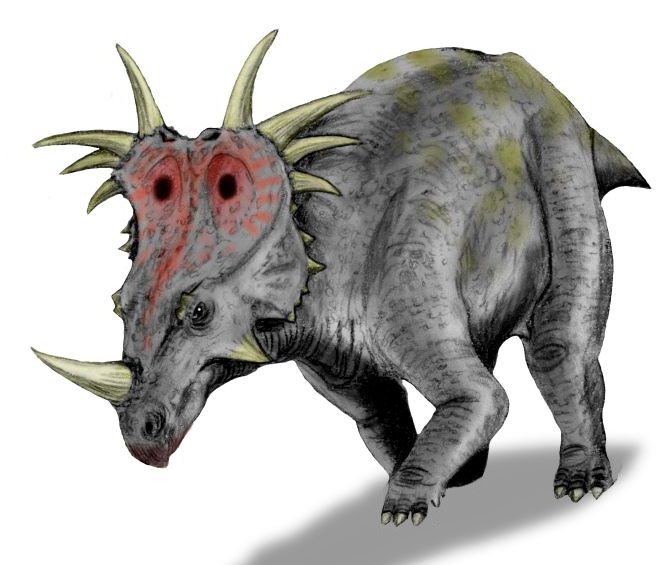The Spiky-Faced Dinosaur!
Meet Styracosaurus, the dinosaur with a face full of spectacular spikes!

| Meaning | Spiked lizard [Styracosaurus] |
| Pronunciation | sty-RAK-uh-sore-us |
| When: | Late Cretaceous (75–74 million years ago) |
| Where: | North America (notably in Alberta, Canada) |
| What: | Ceratopsian (quadrupedal herbivorous dinosaur with a large frill and multiple facial horns) |
| Weight: | Approximately 3 metric tons |
| Length: | About 5–5.5 meters (16–18 feet) |
| Diet: | Herbivorous (ate cycads, palms, and other low-lying plants) |
| Discovered: | First described by Lawrence Lambe in 1913 |
Styracosaurus roamed the Earth about 75 million years ago and is known for its amazing frill decorated with long, sharp spikes that made it look like a prehistoric crown.
Imagine a dinosaur as big as a car, with a huge nose horn and six or more spikes sticking out from its frill – that’s Styracosaurus!
This plant-eater used its impressive spikes and horn to protect itself from hungry predators, and it probably used them to show off to other dinosaurs too.
With its powerful beak, Styracosaurus could chomp on tough plants and leaves.
Living in herds, these spiky friends moved together to find food and stay safe.
Styracosaurus was truly a magnificent sight, with its crown of spikes and its strong, stocky body!
